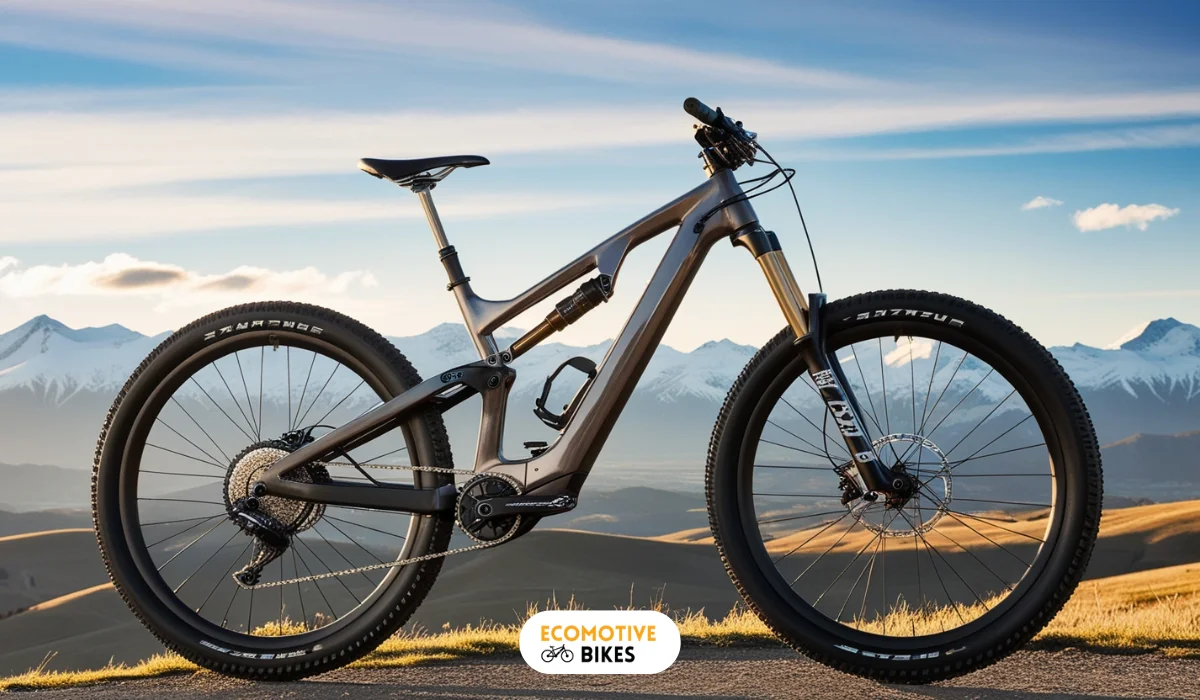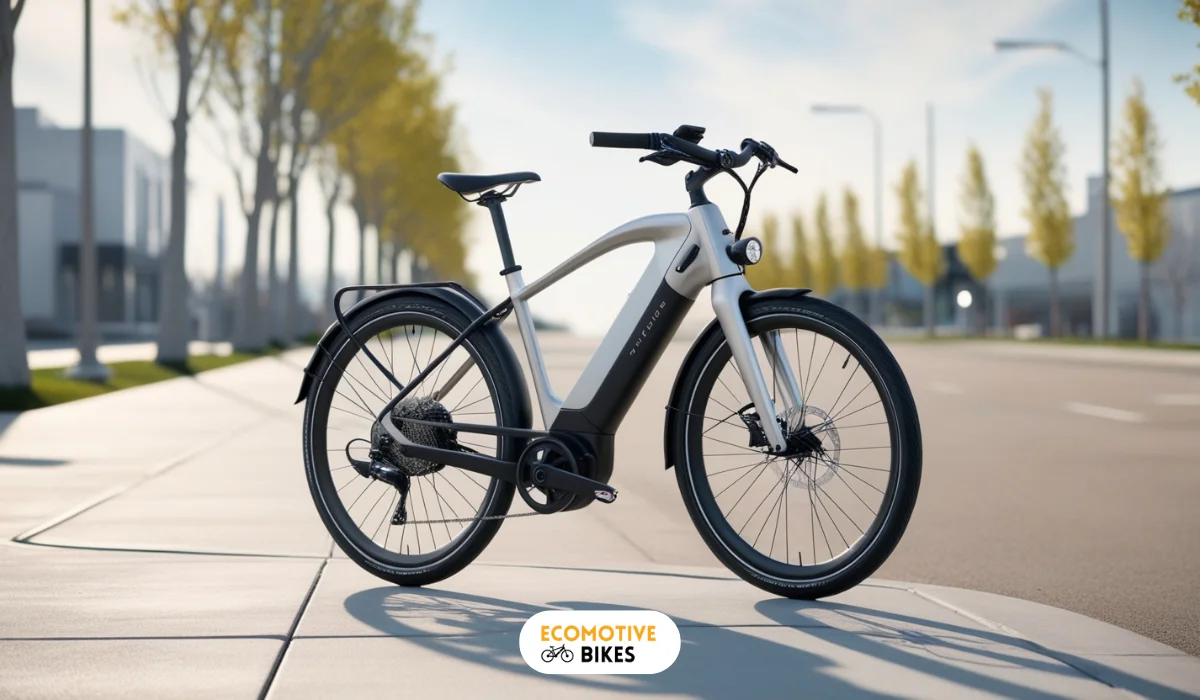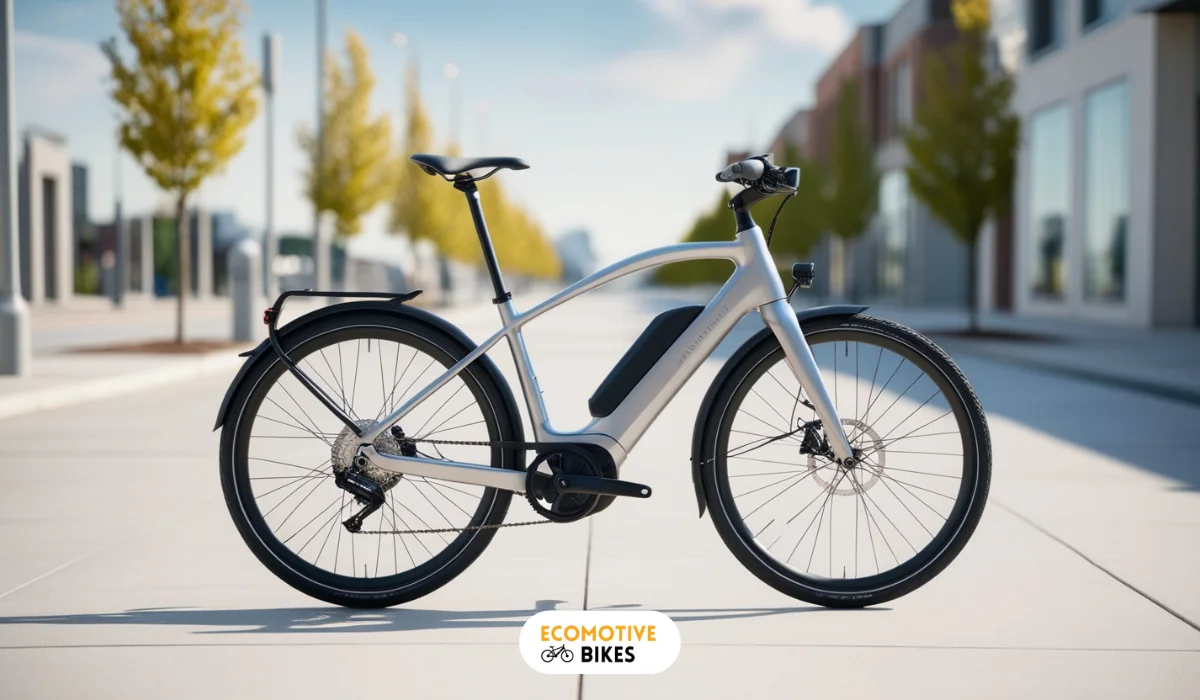Dual Motor E-Bike vs Single Motor E-Bike: Which is Right for You?
Dual motor e-bike vs single motor e-bike: Compare and explore the differences in power, performance, cost, and battery life to help you choose the best option.
Table of Contents
Related Articles:
Dual motor e-bike vs single motor e-bike: Just when I thought I had a good grasp of electric bikes, I discovered the fascinating debate between dual motor and single motor ebikes. If you’re considering an electric bike, understanding the differences between these two options is crucial for making an informed choice.
In this post, I will share insights on the performance, battery life, and riding experience each type offers, so you can maximize your ebiking adventures and find the perfect fit for your needs.
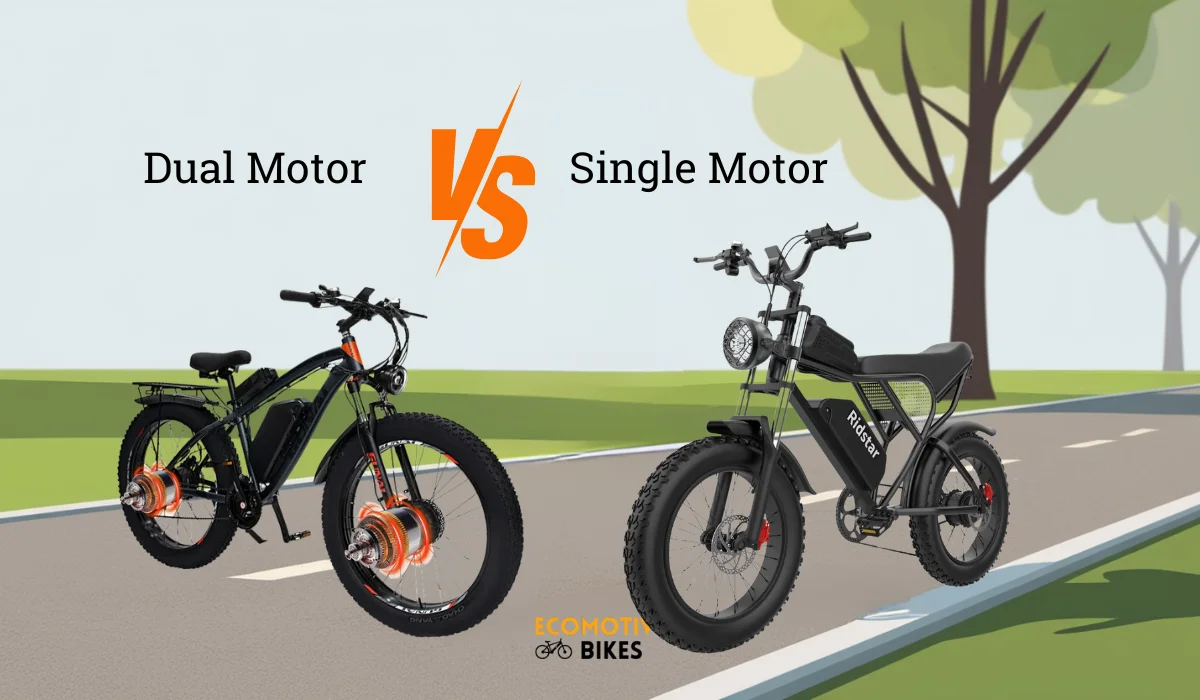
Understanding Motor Configuration
The motor configuration of an eBike significantly influences its performance and riding experience. By understanding the distinctions between single motor and dual motor setups, you can make a more informed choice that aligns with your riding preferences and needs.
Each configuration has its unique advantages and trade-offs that can affect factors like speed, terrain handling, and overall efficiency.
Single Motor eBikes
Along with being more lightweight and cost-effective, single motor eBikes excel in providing a decent performance for urban commuting and smooth terrains. They often require less maintenance and are generally easier to handle, which is attractive for beginners.
However, they can struggle on steep inclines or rougher terrains where additional power might be beneficial. (Choosing a single motor eBike can be a wise decision for casual riders prioritizing affordability and ease.)
Dual Motor eBikes
To enhance power and traction, dual motor eBikes utilize two motors, allowing them to tackle challenging terrains more effectively. The increased power translates to superior acceleration and the capability to climb steep hills with ease, making them ideal for adventurous trails.
However, they are typically heavier and more expensive than their single motor counterparts, which may be a disadvantage for users seeking lightweight options. (Opting for a dual motor e-bike is perfect for serious riders wanting versatility and enhanced performance.)
E-bikes with a dual motor configuration offer a unique riding experience that caters to thrill-seekers and those who venture off-road. The combination of power from both motors can significantly reduce the strain on each unit, enhancing longevity and performance. It’s imperative to weigh this against the added weight and cost when considering your options. (Choosing the right motor configuration depends on your riding style and intended use.)

Performance Metrics: Dual vs Single Motor Ebike
While assessing the performance metrics of dual motor and single motor eBikes, it becomes clear that motor configuration plays a significant role in how each type responds to varying riding conditions.
Dual motor systems typically deliver quicker acceleration and higher top speeds due to the added power and torque, enhancing overall riding dynamics.
On the other hand, single motor e-bikes are often lighter, making them more agile in general commuting scenarios. (You should consider your primary riding purpose before making a choice.)
Speed and Acceleration
After analyzing speed and acceleration, you’ll find that dual motor eBikes can achieve rapid takeoffs and maintain higher speeds on flat terrains, making them ideal for performance-oriented riders. In contrast, single motor eBikes might struggle to reach those top speeds but often provide a smoother, more controlled acceleration experience, appealing to casual cyclists looking for ease. Ultimately, the choice will depend on your specific riding style and speed requirements.
Hill Climbing and Terrain Adaptability
Adaptability is another area where dual motor and single motor eBikes differ significantly, especially when tackling steep hills or rough terrains. Dual motor setups excel in these conditions, allowing for better weight distribution and enhanced traction, effectively conquering challenging climbs. Single motor eBikes may find themselves struggling, especially if they aren’t designed for adverse conditions, making it imperative to consider the variety of terrains you plan to ride on regularly.
For instance, if you live in a hilly area and frequently navigate steep pathways, a dual motor eBike will offer you the necessary power to ascend with ease. Conversely, if your rides are mainly through flat city streets, a single motor eBike can suffice, providing you with a lightweight and efficient option. By understanding terrain adaptability, you can make a more informed decision based on how you ride.
Battery Life and Efficiency: Single vs. Dual Motor E-bikes
Some cyclists often find themselves weighing the advantages of battery life and efficiency when choosing between dual motor and single motor ebikes.
A single motor system can provide sufficient power for most commuting needs while ensuring extended battery life. However, the efficiency of a single motor can limit your options on steep terrain or long rides, impacting how far and fast you can ride before needing to recharge.
Energy Consumption in Single Motor Systems
Behind a single motor system’s design lies an efficient approach to energy consumption, focusing on minimizing battery drain. These systems typically optimize power usage for everyday conditions, enhancing battery life significantly. In real-world usage, this can translate to longer intervals between charges, as you’ll often find that single motor ebikes last well during standard commuting. With careful management of speed and assistance levels, you can maximize efficiency without sacrificing performance.
Battery Usage in Dual Motor Systems
At the same time, dual motor systems tend to draw more power, leading to faster battery drain. However, this added power translates into enhanced climbing capability and speed, making it suitable for those seeking longer rides and varied terrain.
With dual motor configurations, you may have access to extended distances but at the cost of quicker battery depletion. (It’s important to weigh your ride needs against battery performance when making your choice.)
In fact, the extra power of dual motor systems can be invaluable during challenging rides, providing reliable assistance when needed most. While you may enjoy increased versatility and quicker acceleration with dual motors, the battery will require more frequent recharging sessions, especially on demanding trails. (Deciding on a dual motor ebike means considering whether the extra power suits your riding habits and preferences.)
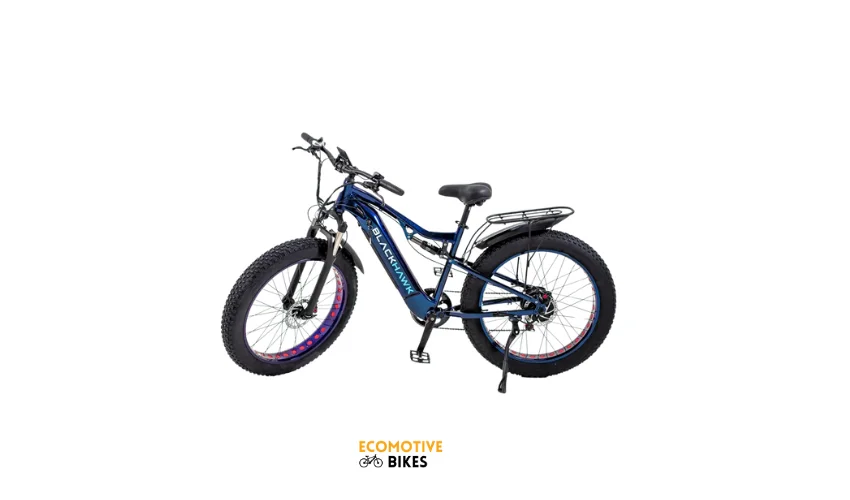
Dual vs Single Motor Electric Bikes: Cost Considerations
To determine the best option for your needs, it’s necessary to examine both upfront and ongoing costs associated with single and dual motor eBikes.
While dual motor models typically come with a higher price tag due to their advanced technology and enhanced performance, you should also consider long-term expenses related to maintenance and battery life, which can vary significantly between the two types.
Ultimately, understanding these cost implications will help you make an informed decision.
Price Differences Between Single and Dual Motor eBikes
An entry-level single motor eBike can range from £600 to £10,000 in the UK and $750 to $15,000, while a dual motor eBike typically starts at around $1,500 and can go upwards of $15,000 or more. While the initial investment for a dual-motor model is higher, it often offers better durability and longevity, which can offset the price difference in the long run.
Maintenance and operational costs may also vary based on the complexity of the systems involved, with dual motors possibly requiring more attention.
Value for Performance of Single and Dual Motor E-bikes
Besides the initial cost, the performance-to-value ratio is a significant factor to evaluate. If you’re looking for speed, power, and the ability to tackle tougher terrains, investing in a dual motor eBike might offer more value despite the higher price point. On the other hand, if your rides are more casual and your needs modest, a single motor eBike can efficiently meet your requirements at a lower cost.
To maximize your investment, I recommend considering how you plan to use your eBike. If you’re a daily commuter or an adventurous rider who takes on various terrains, the enhanced performance of a dual motor could justify the higher upfront investment.
Conversely, if you primarily ride on flat surfaces and seek a more budget-friendly option, a single motor may offer adequate power and efficiency without the additional expense. Weigh these factors against your lifestyle to make the best decision for your needs.
User Preferences and Use Cases of Dual vs. Single Motor E-bikes
Many enthusiasts often find themselves choosing between single and dual motor eBikes based on their unique preferences and lifestyle needs.
Cyclists who prioritize daily commuting will appreciate the efficiency and lower maintenance of single motor eBikes, while those on adventurous pursuits will benefit from the added power and versatility of dual motor eBikes for challenging terrains and long-distance rides.
Ultimately, deciding which is best for you depends on your riding style and intended use (consider both your commuting habits and adventure plans).
Commuters vs Adventurers
Around the urban landscape, commuters typically favor single motor eBikes for their practicality and cost-effectiveness. If your primary goal is to navigate city streets efficiently, this option will suit you well. On the other hand, adventurers who seek more rugged terrains and long ride capabilities will find dual motor eBikes ideal due to their superior power and performance. Your choice should reflect your main activities and lifestyle (identify your main riding scenarios to guide your choice).
Customization and Add-ons for Each Type
Above all, the extent to which you can customize each type of eBike can significantly enhance your riding experience. Single motor eBikes usually offer a range of accessories that can improve usability and style, while dual motor eBikes provide options for improved performance modifications that cater to off-road adventures.
Tailoring your eBike ensures it meets your specific riding preferences (consider what custom features matter most to you).
In addition, many dual motor eBike models allow for a greater degree of customization, enabling you to optimize performance traits such as torque and battery efficiency, which is paramount for serious off-road riders.
Single motor eBikes, while limited in high-performance mods, offer several practical enhancements like racks or fenders for urban commuting convenience. Ultimately, assessing how each option can adapt to your personal needs is vital (think about the balance between performance and practicality in your decision).
Safety and Stability: Dual Motor E-Bike vs Single Motor E-Bike
Not all eBikes are created equal when it comes to safety and stability. A dual motor eBike typically offers enhanced traction and stability, especially when navigating uneven or slippery surfaces.
The additional motor helps distribute power more evenly and allows for more controlled responses during tough rides. This can be a game-changer for those who ride in challenging conditions, making dual motor options a safe choice for adventurous riders.
Handling and Ride Quality
At the core of handling and ride quality, the design and motor configuration significantly impact your overall experience. A dual motor setup provides more power to both the front and rear wheels, enhancing grip and allowing for smoother maneuvering on various terrains.
With a single motor, you might find it easier to handle in certain situations, but it often falls short on steep inclines or loose surfaces, potentially affecting your overall stability when tackling challenging trails.
Weight Distribution and Control
Along with the motor configuration, weight distribution plays a pivotal role in the handling of your eBike. Dual motor setups tend to have a more balanced weight distribution due to the placement of motors near the wheel hubs, which can enhance stability and control.
This could lead to a more comforting ride especially when cornering or navigating rough terrains. Conversely, single motor eBikes may create an imbalance that can affect the ride comfort, particularly during accelerative changes or on notably uneven surfaces.
Hence, understanding the impact of weight distribution can make a sizable difference in your riding experience. You might find single motor eBikes lighter, but the weight can feel concentrated, affecting your ability to control the bike particularly during rapid shifts in speed. In contrast, the balanced weight of dual motor eBikes can lead to improved handling, making it easier to ride for extended distances without tiring easily.
Transitioning between surfaces becomes more effortless, and you can feel more confident tackling a variety of terrains.
Final Words: Dual Motor Ebike vs Single Motor Ebike
Summing up, choosing between a dual motor ebike and a single motor ebike largely depends on your riding style and needs. If you seek enhanced power for steep inclines and faster acceleration, a dual motor setup might be the best choice for you.
On the other hand, if efficiency and a lighter ride suit you better, then a single motor ebike could be ideal. Ultimately, I encourage you to consider your individual requirements and preferences to make an informed decision that elevates your riding experience.
Find more electric bike motor-related posts here.

